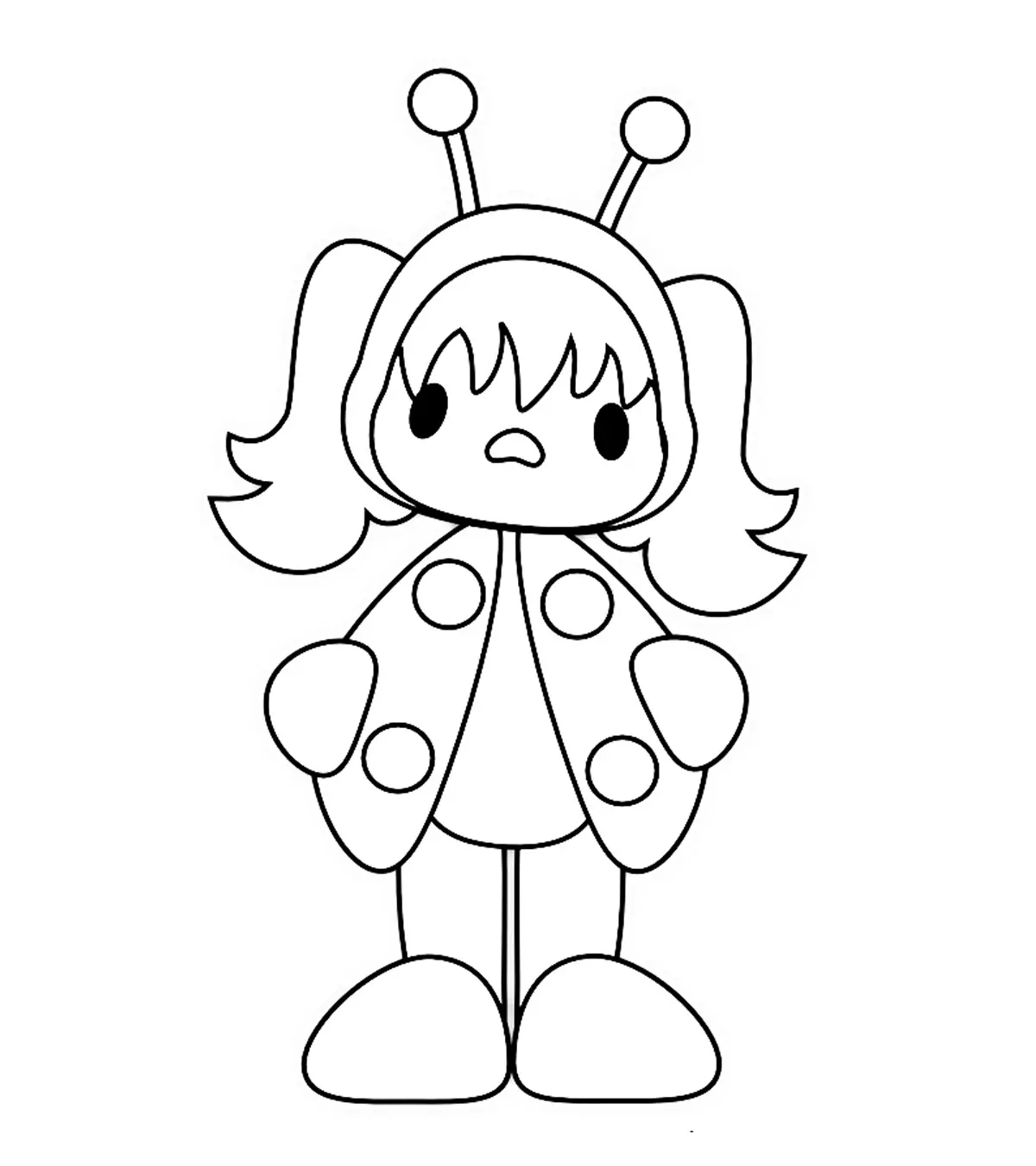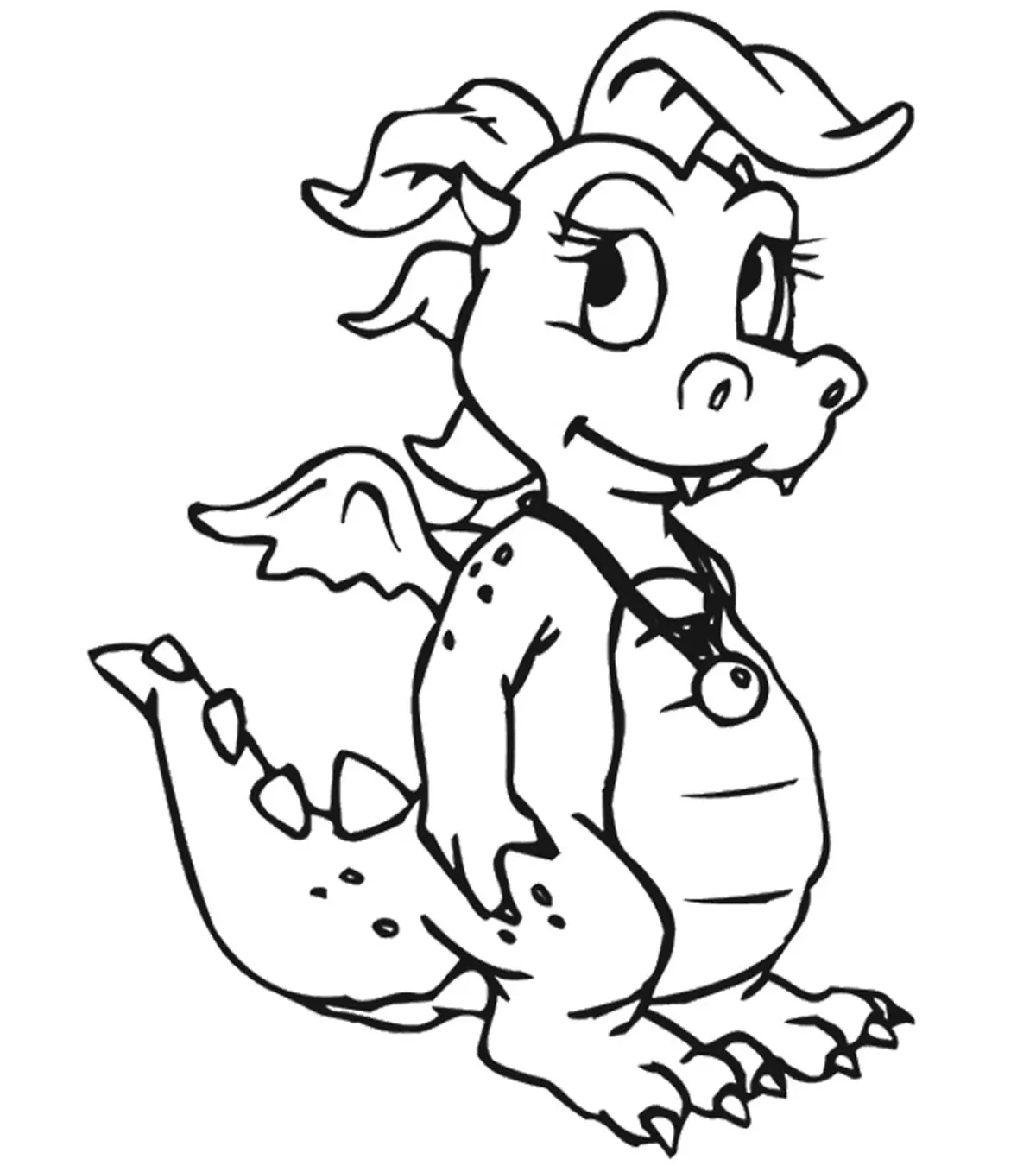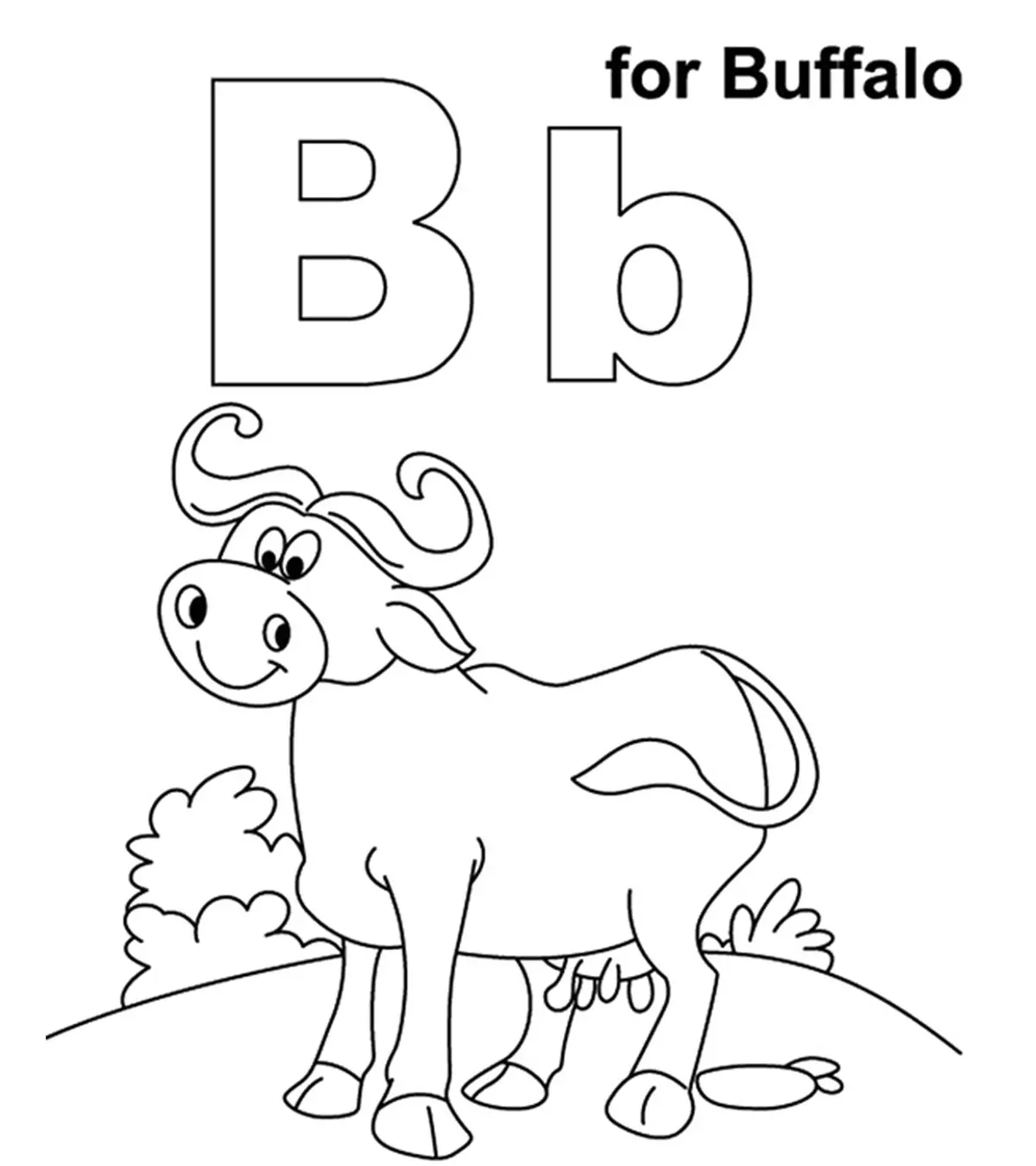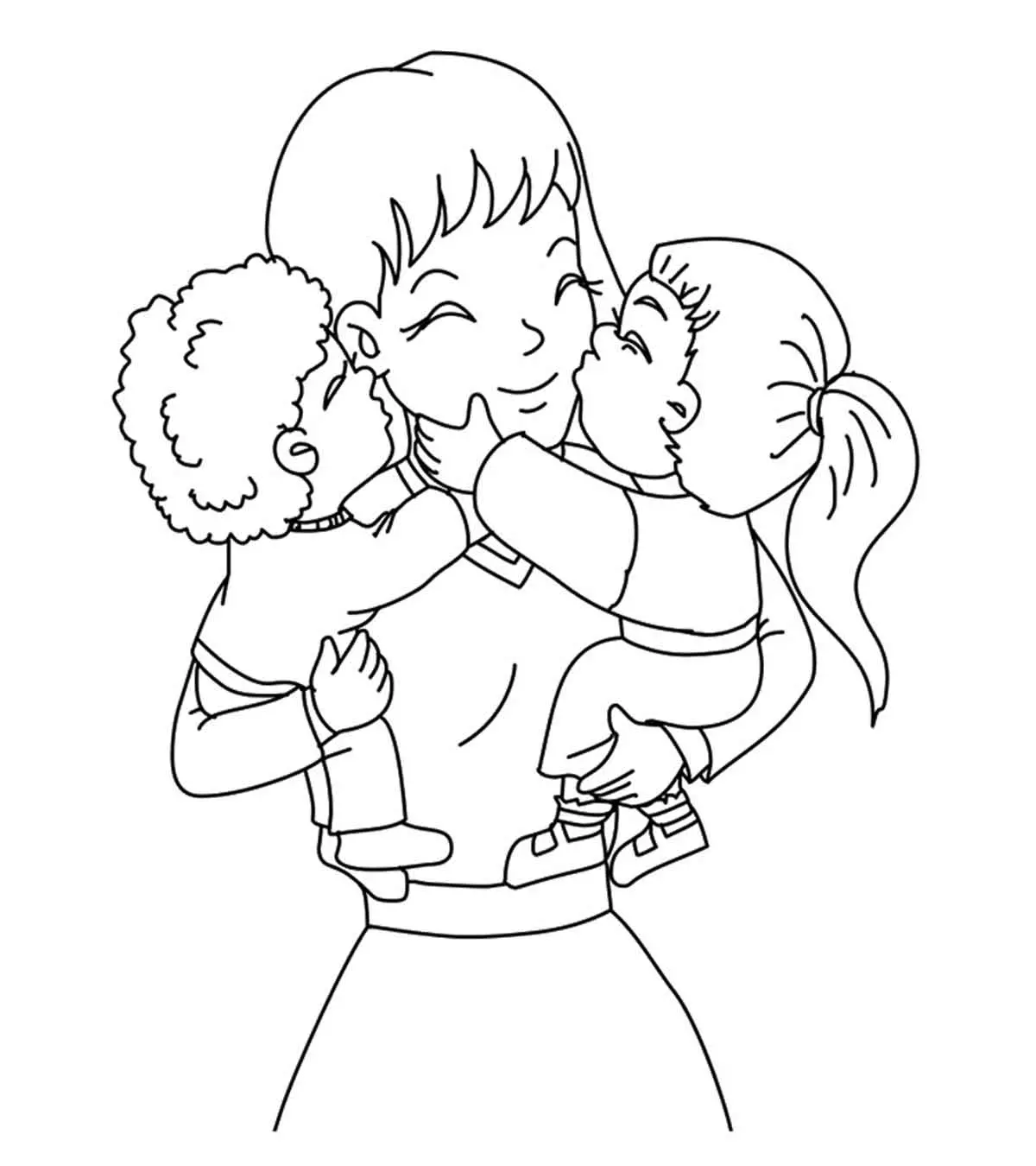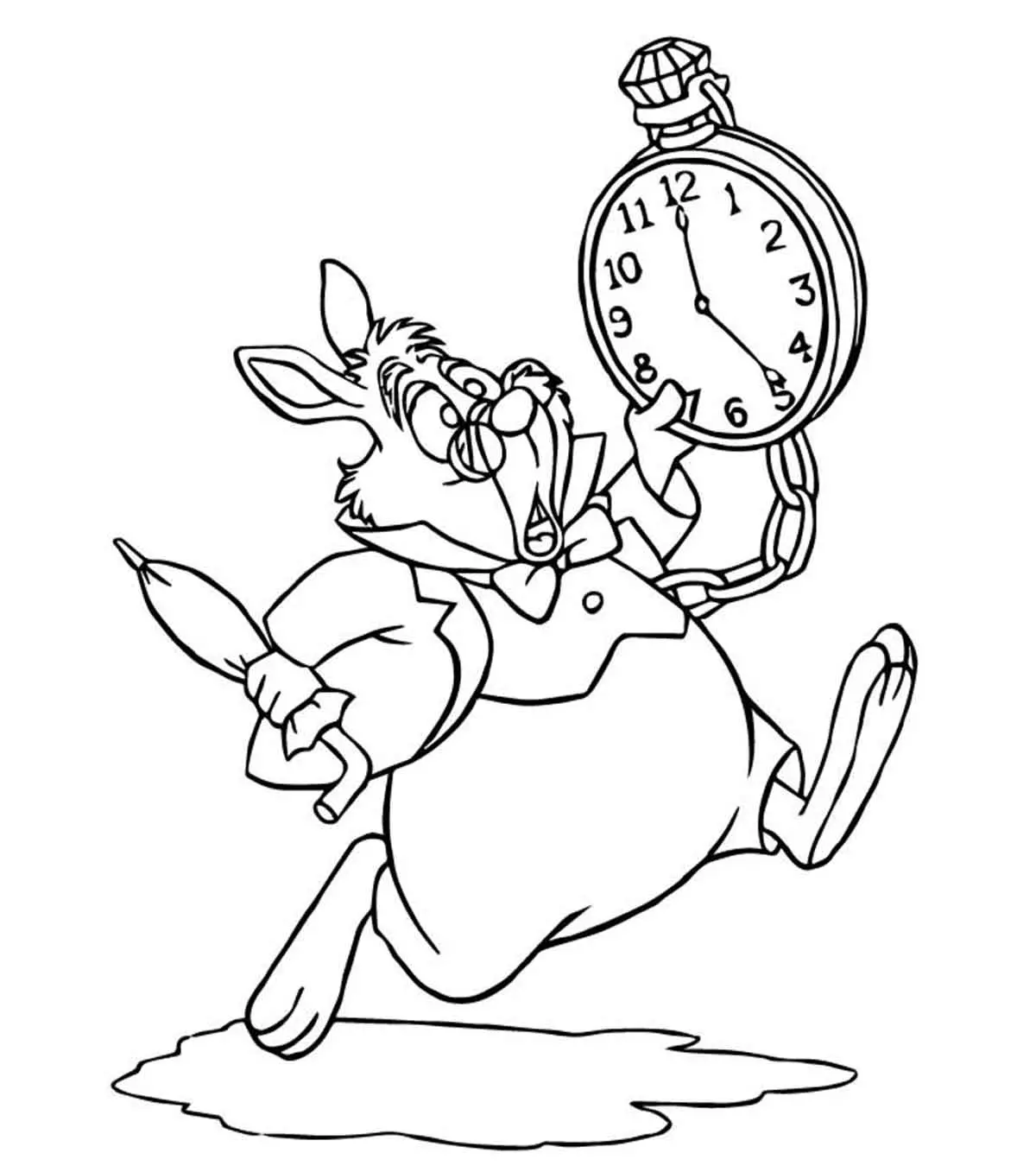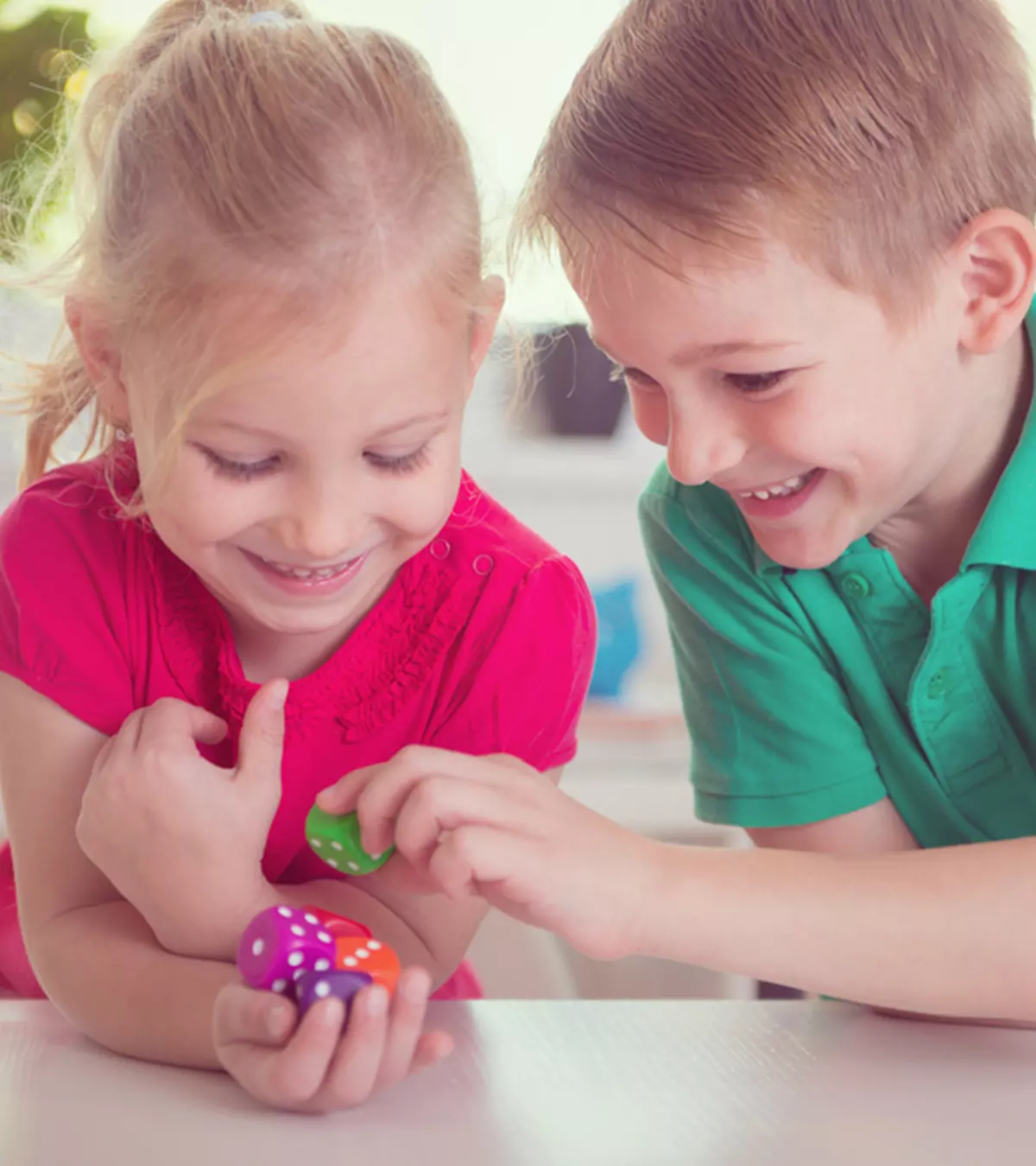
Image: ShutterStock
Dice games for kids help hone children’s counting skills, keep them entertained at home when they cannot play outdoors, and are a good replacement for screen time. These games have been played for centuries for ease and fun, and they need minimum equipment, such as paper, pencil, and dice. Dice games also help improve children’s critical thinking, problem-solving, and fine motor skills and promote cooperation, social skills, and sportsmanship. In addition, they are a quick fix for meltdowns resulting from boredom as they can be played anywhere, be it on a road trip, on an airplane, or even when you are stuck in traffic. Read this post where we bring some fun, creative, and interesting dice game ideas for you.
Key Pointers
- Knock out is a fun dice game for kids in which two or more players can easily engage.
- Playing fifty and catch-up are examples of some of the most exciting and thrilling dice games, among others.
- Roll a value is one such dice game where kids can play with fake notes to “earn money” by rolling a pair of dice to get an even number.
15+ Dice Games For Kids
Dice games can be played with friends and family so you can spend time together and enhance your bond.
1. Passage

It is a classic game to teach basic addition and numbers. The game is super fun and entertaining for children and adults.
Number of players:
Two or more
You will need:
- A pair of dice
How to play:
- Each player starts by rolling a die. The player who scores the highest will be the first player.
- The player who scores the lowest number will roll the die a second time. The number on the die is the point number.
- For example, if you roll ‘two’ after rolling the lowest number, ‘two’ is your point number.
- The first player starts rolling both the dice together. If they get the point number, they score one point. If the number is double the point number, they get two points.
- The first player to score 11 points wins.
2. Run for it
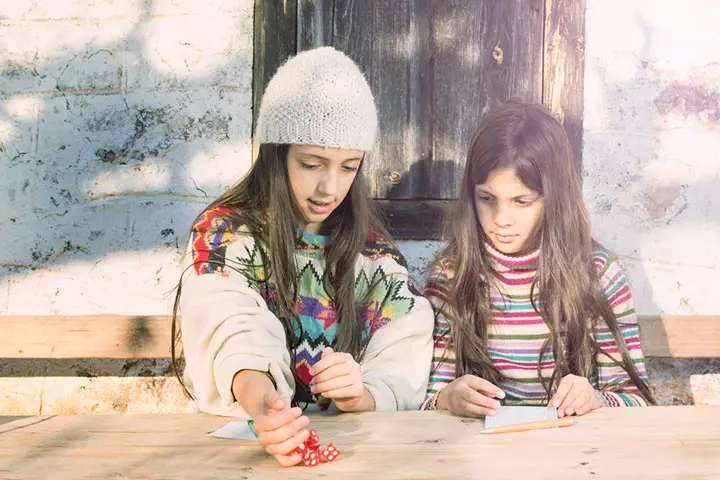
Run for it is a great game to teach your child the power of sequences. As they make different sequences throughout this game, they can learn probability.
Number of players:
Two or more
You will need:
- Six dice
How to play:
- Each player takes turns in rolling out six dice.
- Once rolled, the player tries to organize the set into a run. A run is a set of consecutive numbers starting from 1. For example, 1-2-1-2-3-4 has two runs (1-2) and (1-2-3-4), while 2-3-3-4-5-6 has no runs.
- If you make a run, you’ll get5 points for each number. As in the previous example, (1-2) gets 10 points and (1-2-3-4) gets 20 points. So, you get30 points in total.
- The player who scores 100 points first wins.
Tamara L. Chilver, a mother of five, elementary teacher, and blogger, favors using dice games as a fun method to teach children math. She says, “I love using dice because children automatically relate dice with playing games and having fun. There are many outstanding math games to play with dice. You can play an addition game by rolling two dice and adding the total. The first player to one hundred wins. You can later add a third die to practice adding three numbers. You can play a multiplication game by rolling two dice, multiplying them to get your product, and adding up the total (i).”
3. Knock out
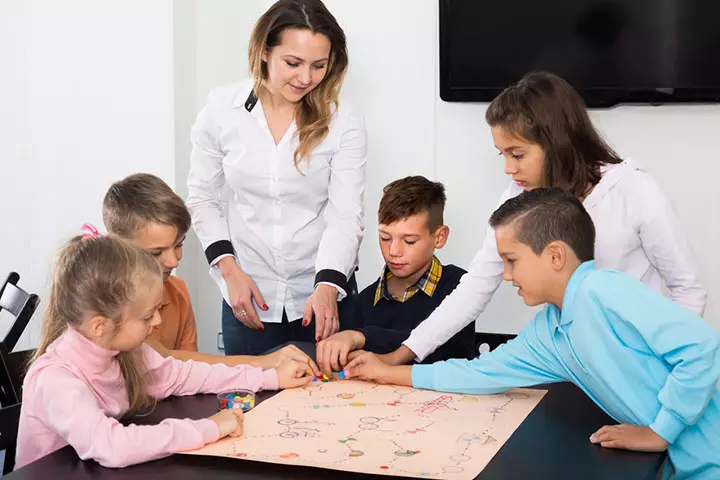
Knock out is a simple game and can be played with preschoolers and children who are learning numbers.
Number of players:
Two or more
You will need:
- A pair of dice
How to play:
- Each player selects a knockout number from 6, 7, and
- The players have to roll the dice in turns and add the numbers.
- If the added number is not the knockout number, add the number to the player’s score and pass on the dice to the next player.
- If the added number is the knockout number, the player gets no points for that round.
- The player who scores 100 points first is the winner.
4. Beat that

It is a family dice game that children would love to play. Playing this easy and entertaining game with the whole family can give you a great time.
Number of players:
Two or more
You will need:
- A pair of dice
How to play:
- Each player must roll the pair of dice. The number facing upwards is the player’s number. For example, if one dice has two and the other has five, the player gets 25.
- They pass the dice to the next player and say, “Beat that!”
- The next player should try to roll a combination that is greater than the first player.
- The player with the highest combination is the winner of the round.
- You could also add up the numbers and declare the player who reaches 1000 as the winner.
- You can adjust the number of dice according to the age of the players.
5. Fifty
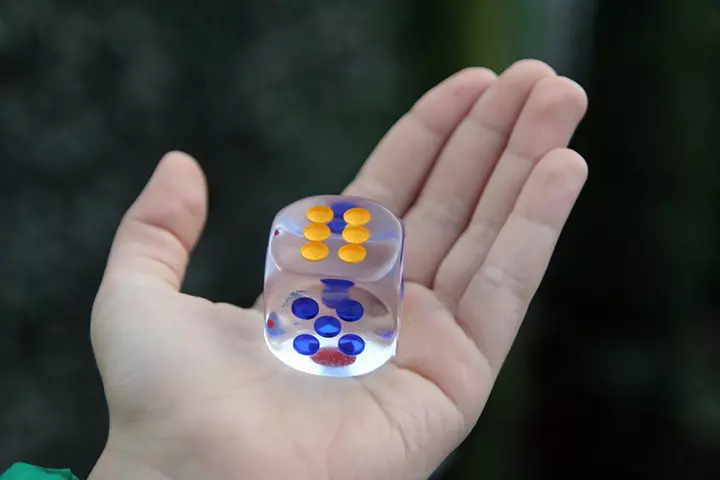
Here’s one of the best brain games for kids. Fifty teaches critical probability analysis and deduction skills easily.
Number of players:
Two or more
You will need:
- A pair of dice
How to play:
- Each player takes turns in rolling the pair of dice and attempting to roll doubles.
- If the dice are not doubles, the player does not get a score.
- If the dice are doubles, they get the following scores:
- Double 1s, 2s, 4s, and 5s = 5 points
- Double 6s = 25 points
- Double 3s = no score, plus their score up to that point is wiped out, and they have to start again.
- The player who scores 50 points first is the winner.
6. Catch up
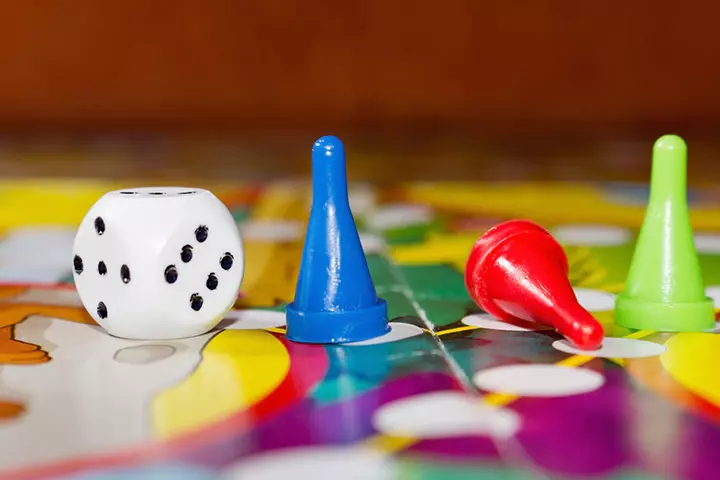
If you have a bigger group of children, initiate this game and watch them enjoying it.
Number of players:
Four or more
You will need:
- A pair of dice
- Counters or small toys for each child
How to play:
- Players sit in a circle so that the youngest and the oldest ones are opposite each other.
- Distribute one die to both the players.
- Put the counters in the center of the circle.
- Players without the dice can create a rhythm by clapping their hands, knees, or tables.
- Whoever has the dice must roll the dice at the same time.
- If the number is any other number than 6, they collect a counter.
- If the number is 6, they pass the die to the player to their left and start clapping to the rhythm.
- The child who already has a die in possession while receiving one from the previous player is the winner.
7. Going to Boston

It is an ancient classic dice game for kids that is easy to learn, entertaining, and your children will soon be adding up numbers like a pro.
Number of players:
Two or more
You will need:
- Three dice
How to play:
- Roll three dice and keep the highest aside.
- Repeat with the remaining two.
- Roll the single die and add up the total—it becomes your score.
- The player who reaches 500 points first is the winner.
- You can use more dice as well. And if your children are older, ask them to multiply the numbers instead of adding them.
8. Three or more
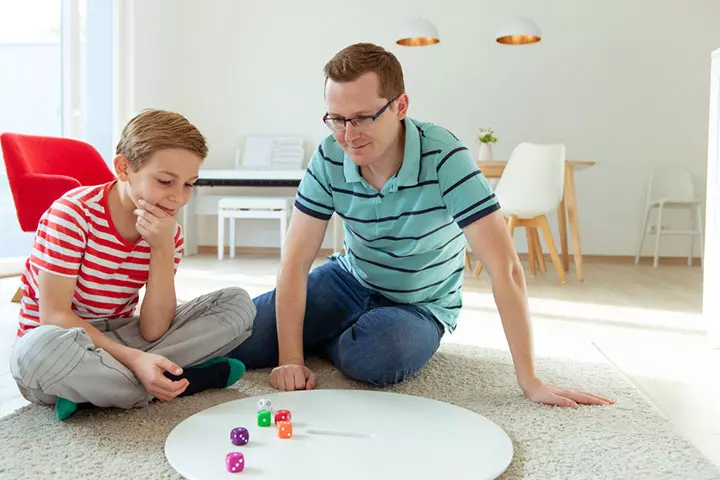
Three or more is a fast-paced game that your children would enjoy. You can play it with children of all age groups.
Number of players:
Two or more
You will need:
- Five dice
How to play:
- Each player takes turns to roll the five dice.
- The goal of the game is to roll out at least three of one number.
- When the five dice are rolled, these are the probabilities that might happen:
- If the roll contains no matches, the player scores zero points and has to pass the dice to the next player.
- If the roll contains three or more of the same number, the player scores, and the dice are passed to the next player.
- If the roll contains two of the same number, the player must re-roll the remaining three dice.
- If there are three or more of the same number, the player scores. If there are not, the dice are passed to the next player.
- The player to reach the score of 500 first is the winner.
- The scoring of the rolls is done this way:
- 3 of the same number = 3 points
- 4 of the same number = 6 points
- 5 of the same number = 12 points
9. Drop dead

This game is similar to “three or more” and equally fun. Though the name of the game is scary, your children will be engaged in playing it.
Number of players:
Two or more
You will need:
- Five dice
How to play:
- Each player takes turns in rolling all the five dice at once.
- The goal of the game is to roll out dice without two or five showing up.
- If the player rolls the dice and there are other numbers than two and five, add up the numbers that make the player’s score.
- Add up the numbers every time the player rolls without two or five, and add them to the score.
- When there are dice with two and five on them, the player does not score any points and has to keep them aside and roll the remaining dice again.
- If the remaining dice have a two or five, the player does not score and keeps the dice with the numbers aside.
- Continue till the player has no dice left.
- Then pass on the dice to the next player.
- The player to score 500 points first is the winner.
10. Pig

Pig is an interesting game to keep children engaged for a long time. It is surprisingly simple and develops children’s decision-making skills.
Number of players:
Two or more
You will need:
- A die
How to play:
- Each player takes turns in rolling the die.
- The goal is to keep rolling it until it doesn’t roll.
- A player can take any number of turns and can stop whenever they like.
- They have to add the numbers that appear to their score.
- If a player encounters ‘one,’ they lose all their points they have scored and have to start over again.
- Give the die to the next player and continue.
- The player who scores 100 points first is the winner.
11. Sequences

Sequences is similar to “three or more” and “run for it.” It is suitable for preschoolers and older children who are learning to count numbers.
Number of players:
Two or more
You will need:
- Six dice
- Pen and paper
How to play:
- Each player takes turns in rolling six dice.
- If there is a ‘one’ in the round, the player scores five points for every number in a sequence. For example, if the player has rolled 3-2-1-4-1-6, they get 20 points for the (1-2-3-4) sequence as there are the numbers 1, 2, 3, and 4 in order.
- If there is no ‘one’ in the round, no points are scored.
- If there are three ones in the round, the player loses all the points they scored.
- The player to reach 100 points first is the winner.
12. Round the clock
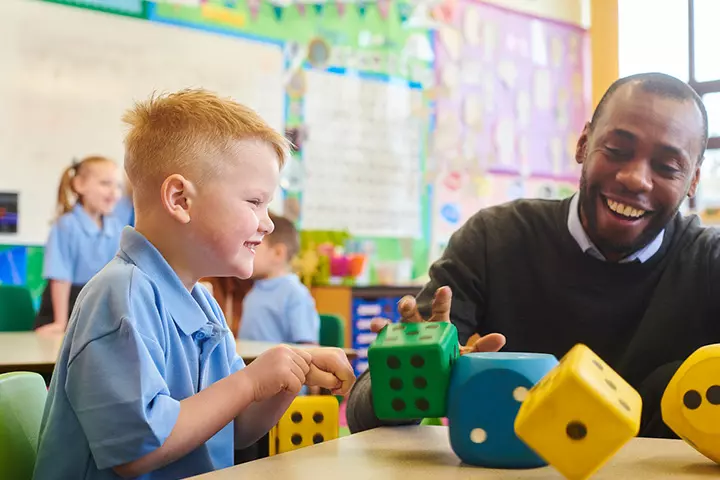
Round the clock is a dice game for kids who recognize the number of spots on the dice. It can be played with children and adults of any age group.
Number of players:
Two or more
You will need:
- A pair of dice
How to play:
- All players throw a die. The player who gets the lowest number will begin the game.
- The aim of the game is to roll the numbers from one to 12 in order.
- The first player has to attempt to throw a one. Then all the players will take turns to do the same.
- In the next round, the players who had rolled ‘one’ will try to roll ‘two.’ Any player who did not get ‘one’ in the first round should try to roll this time.
- The game continues this way until all the players get to roll all the numbers until 12.
- The first player who reaches 12 is the winner.
 Quick fact
Quick fact13. Block out

The game is essentially for older children who can multiply, but you can improvise it for younger children by making them add numbers.
Number of players:
Two to four players
You will need:
- A pair of dice
- Graph paper
- Colored pencils – one color for each player
How to play:
- The first player begins by rolling the dice.
- They draw the rolled numbers on graph paper. For example, if the player throws ‘five’ and ‘two,’ they draw a box with those dimensions.
- The second player does the same.
- The boxes have to be drawn as close as possible though they should not overlap.
- Draw as many boxes as you can on the paper. Once space is all used up, and there is no scope for drawing more boxes, calculate each player’s area by adding their numbers.
- The player who has the maximum area is the winner.
14. Roll a value
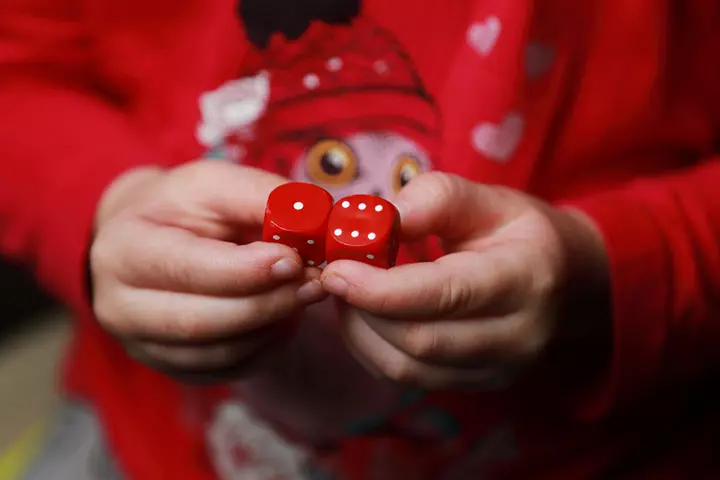
If you are trying to teach the value of the currency to your child, this game can do the trick for you.
Number of players:
Two or more
You will need:
- A pair of dice
- Coins of different values
How to play:
- Each player rolls the pair of dice.
- Add up the numbers on them to get a figure.
- The player determines which coins to use so that they can equal the figure.
- The first player to earn $10 is the winner.
15. Aces in the pot

Aces in the pot is a simple but enjoyable game that will keep your children and family occupied for quite some time. It is one of the popular games to play with siblings.
Number of players:
Three or more
You will need:
- A pair of dice
- Counters or tokens – two per player
- A bowl
How to play:
- Each player has two tokens. Place the bowl in the center.
- The first player rolls the dice.
- If one of the dice shows ‘one,’ they have to put one token in the bowl.
- If the dice show double ones, the player has to put in two tokens. If the player has only one token, put only one.
- If the dice shows a ‘six,’ the player should pass one token to the player on their left.
- If the dice shows double sixes, the player has to pass two tokens to the next player.
- If the dice show neither one nor six, the player takes no action and passes the dice.
- If a player has no tokens, they have to wait till they receive tokens. They cannot take turns until then.
- Continue playing until all the tokens are in the bowl except one.
- The player with the last token rolls the dice thrice in a row.
- If the dice do not show ‘six’ all three times, the player is the winner.
- If the dice shows ‘six,’ the player has to pass the token along to the next player who throws the dice thrice again and so on until someone throws the dice thrice without showing a ‘six’—that player is the winner.
16. Dice wars
This is a cool math game that’s perfect for preschoolers and older kids. It’s a fun way to practice counting, addition, and other basic math skills while getting into the spirit of a friendly dice war competition.
You will need:
- Two six-sided dice
- A scoresheet or paper to keep track of points
How to play:
- Decide who goes first. This can be done with a simple coin toss or any agreed-upon method. Each player starts with zero points.
- On your turn, roll both dice. Add the two numbers on the dice to get your total score for that round.
- After rolling, decide whether to keep your current score or take a risk and roll again to potentially increase your points.
- If, at any point, you roll a combination of dice that adds up to 7, you lose all points for that round, and your turn ends.
- The first player to reach an agreed-upon point total (e.g., 100) wins the game.
Frequently Asked Questions
1. What is the use of dice in early childhood education?
Dice games can help children learn math concepts such as number recognition, counting, algebra, and probability.
2. What can I use instead of dice?
You may use a random number key on a calculator, random pages from a big fat book, spinners, drawing chits of paper with numbers from a bag, or a deck of playing cards in place of a dice. Other options include a telephone directory, a stopwatch, and online dice simulators.
3. How many dice are typically used in children’s dice games?
The dice games for children can include one die to many dice depending on the game. However, most games require only one or two dice.
4. What age range is appropriate for playing dice games?
Dice games are versatile and can be played by children of all ages. However, some games may need to be adapted for younger players to ensure they are engaging and understandable. For preschoolers, simple games focusing on counting and recognition are ideal, while older children can enjoy more complex games that involve strategy and critical thinking.
5. Can dice games be played with just one player?
Yes, many dice games can be played solo or with a single player. An example is Yahtzee.
6. What is the difference between a standard die and a polyhedral die?
A standard die is of a cube shape with six sides, numbering 1 to 6, while a polyhedral die has multiple faces which are equal in size and may have four to over 20 sides.
7. How should one keep score in dice games?
The scoring system in dice games varies with the game. While some games use a point system depending on the numbers rolled on the dice, others may have specific rules for scoring.
8. Are there any safety concerns when playing with dice?
Dice themselves do not pose any safety concerns, but parents should ensure that their children are not putting dice in their mouths or not hurting each other with dice, especially the young ones.
9. Can I make my own dice for playing games?
Yes, you can make your own dice using materials, such as cardboard, wood, or clay.
10. Are there any social benefits to playing dice games with others?
Yes, playing dice games with others can foster socialization and communication skills in children. These cooperative games for kids are particularly effective in encouraging teamwork and collaboration as they work together towards a common goal. These games also provide an opportunity to learn sportsmanship, practice patience, and enhance strategic thinking abilities. Moreover, engaging in such games helps children build a strong sense of community and mutual respect, which are essential for their overall development.
In today’s world, children are inclined toward social media and electronic devices for entertaining themselves; hence these dice games for kids are slowly vanishing. To keep your children away from gadgets, introduce them to these dice games that could be played outdoors or during casual family game nights. Moreover, dice and board games are classic and can never let your kids get bored while enhancing their cognitive and physical skills. Also, join your kids in playing these games to share some fun and laughter. We aimed to provide you with a fresh perspective on games suitable for family game night. Furthermore, we excluded games like Bingo, Tic-Tac-Toe, Connect Four, Jenga, Pick Up Sticks, Dominoes, Go Fish, Charades, Hide and Seek, and even Hopscotch to ensure you have a unique experience. Get your loved ones together and discover a completely new world of dice games.
Infographic: Fun Dice Games For Children To Inspire Learning
Dice games can be fun and engaging for children as they combine play with learning. We present an infographic with a list of dice games you can play with children. These games can encourage your children to learn and practice mathematical concepts. Scroll on!
Some thing wrong with infographic shortcode. please verify shortcode syntaxIllustration: Easy Yet Fun Dice Games For Kids To Play

Image: Dall·E/MomJunction Design Team
Discover 3 easy dice games for kids in kindergarten to grade 3 through this video. Ideal for family game night!
Personal Experience: Source
MomJunction articles include first-hand experiences to provide you with better insights through real-life narratives. Here are the sources of personal accounts referenced in this article.
i. Fun math dice games!.http://www.teachingwithtlc.com/2007/09/math-dice-games-for-addition-and.html
Community Experiences
Join the conversation and become a part of our nurturing community! Share your stories, experiences, and insights to connect with fellow parents.
Read full bio of Katherine Paxton
Read full bio of Nisha Bharatan
Read full bio of Harshita Makvana
Read full bio of Trisha Chakraborty





